| Listing 1 - 10 of 11 | << page >> |
Sort by
|
Book
Year: 2006 Publisher: Rocky Hill (N.J.) : PeproTech,
Abstract | Keywords | Export | Availability | Bookmark
 Loading...
Loading...Choose an application
- Reference Manager
- EndNote
- RefWorks (Direct export to RefWorks)
Book
Year: 2006 Publisher: Bruxelles: UCL,
Abstract | Keywords | Export | Availability | Bookmark
 Loading...
Loading...Choose an application
- Reference Manager
- EndNote
- RefWorks (Direct export to RefWorks)
Cytokines are crucial molecules for intercellular communication. Interleukin-9 (IL-9), IL-22 Binding protein (IL-22BP) were discovered in the Experimental Medicine Unit. Further research is currently focusing on their implication in human and murine inflammatory diseases. Indeed, cytokines are potential therapeutic targets.
In this context, the production of antibodies specifically targeting a cytokine ca be very useful. Monoclonal antibodies against several human cytokines were already produced. They provide an efficient tool for diagnosis by precisely detecting the presence of a cytokine. Furthermore, inhibitory antibodies are able to neutralize cytokines activities to treat inflammatory disease.
Besides passive antibody treatment, several studies succeeded in generating auto-antibodies in mouse and human, against an endogenous cytokine. Their principle is ti introduce a foreign epitope into the endogenous cytokine structure. T lymphocytes can recognize the heterologous element and activated autoreactive B lymphocytes for the production of antibodies.
The goal of this work was to evaluate the efficiency of an anti-cytokine vaccination with P1-HTR tumor cell, expressing the antigen to their surface, as a vaccinal vector. In the first part of this work, we have tried to vaccinate three strains of mice; Balb/c, C57BL/6 and DBA/2. These mice were injected with a clone of P1-HTR expressing human IL-22R and the result showed that an immunisation can be obtained when mice with the same haplotype as P1-HTR were vaccinated.
In the second part, we have tried to extend this type of immunization to non transmembrane antigens such as cytokines. In order to express such human antigens at the surface of P1-HTR we fused them to CD134L, a natural transmembrane human protein. This allows for surface expression of proteins that are normally secreted. After vaccination, we were able to produce specific antibodies and, among them, we isolated blocking antibodies.
In the last part of my work, we have attempted to autovaccinate mice against their own cytokines, such as IL-9 and IL-22, or soluble receptor, such as IL-22BP. This allowed us to induce the production of auto-antibodies. These antibodies include blocking antibodies able to block IL-9 in vivo biological activities, such as upregulation of mast cell protease production.
With our results, we demonstrate that P1-HTR cells could be used as a vaccinal vector in order to induce auto-antibodies, although this method is restricted to MHC haplotype. Several perspectives come with this work, including its extensions to other cytokines or its use to obtain knock down models Les cytokines sont des acteurs cruciaux de la communication entre les cellules d’un organisme vivant. L’interleukine-9 (IL-9), l’IL-22 Binding Protein (IL22BP) ont été découvertes à l’unité de Médecine Expérimentale et y font, depuis, lors, l’objet d’intenses recherches. En effet, ces protéines ont dévoilé leur implication dans de nombreuses pathologies inflammatoires humaines et murines, et constituent de ce fait des cibles thérapeutiques potentielles.
Dans ce contexte, la production d’anticorps spécifiques d’une cytokine s’avère particulièrement utile à plusieurs titres. Sur cette base, des anticorps monoclonaux contre diverses cytokines humaines ont déjà été produits et constituent des outils diagnostiques performants permettant de détecter avec précision la présence d’une cytokine. De plus l’obtention d’anticorps inhibiteurs permet de neutraliser l’effet néfaste de certaines cytokines dans le décours de maladies inflammatoires.
Au-delà de l’administration passive d’anticorps, plusieurs études ont montré qu’il était possible d’induire chez l’animal, et chez l’homme, des auto-anticorps contre une cytokine endogène. Le principe de ces auto-vaccinations est d’introduire un épitope étranger dans la structure de l’auto-antigène concerné. La reconnaissance de cet élément hétérologue permet l’activation des lymphocytes T, qui peuvent alors aider les lymphocytes B autoréactifs à produire des anticorps contre la cytokine du soi.
Le but de ce travail était d’évaluer l’efficacité d’une vaccination anti-cytokine utilisant comme vecteur la lignée tumorale P1-HTR transfectée de façon à exprimer l’antigène à sa surface. Dans la première partie du travail, nous avons cherché à déterminer l’applicabilité de cette méthode vaccinale à plusieurs races murines. Trois races de souris syngéniques ont reçu des injections de cellules P1-HTR suresprimant le récepteur de l’IL22 humaine. Les résultats ont montré qu’une immunisation satisfaite n’était obtenue que dans les races murines exprimant le même haplotype H-2 que les cellules P1-HTR.
Dans la deuxième partie, nous avons tenté d’établir s’il était possible d’étendre cette stratégie à des ant !gènes comme les cytokines, qui ne sont pas des protéines transmembranaires. Les cellules P1-HTR injectées surexprimaient à leur surface une cytokine humaine ou un récepteur soluble grâce à la fusion avec une protéine humaine naturellement transmembranaire (CD134 ligand). Les résultats ont montré que les souris immunisées produisaient des anticorps spécifiques, et parmi eux, des anticorps inhibiteurs.
Pendant la dernière partie de ce travail, nous avons tenté d’effectuer une auto-vaccination. Les protéines surexprimées par les cellules P1-HTR contenaient une cytokine (IL-9 ou IL-22) ou un récepteur soluble (IL22Bp) murins en fusion avec le CD134 ligand humain. Les résultats obtenus dans le cas de l’IL-9 murine permettent d’affirmer que la méthode de vaccination induit la production d’auto-anticorps. Ceux-ci contenaient une proportion non négligeable d’anticorps inhibiteurs, en outre capables de bloquer un effet biologique de l’IL-9 in vivo.
Nos résultats démontrent donc que l’utilisation de la lignée tumorale P1-HTR comme vecteur vaccinal peut être appliquée avec succès à l’induction d’auto-anticorps inhibiteurs contre des cytokines, quoique cette stratégie soit restreinte à l’haplotype MHC. Plusieurs perspectives se dégagent de ce travail, comme l’extension de cette méthode de vaccination à d’autres cytokines ou son utilisation pour l’obtention de modèles de souris knock down
Immunotherapy --- Cytokines --- Mice, Inbred DBA --- Mice, Inbred BALB C
Dissertation
Year: 2006 Publisher: Zürich : ETH (Eidgenössische Technische Hochschule),
Abstract | Keywords | Export | Availability | Bookmark
 Loading...
Loading...Choose an application
- Reference Manager
- EndNote
- RefWorks (Direct export to RefWorks)
Listeria monocytogenes --- Listeria monocytogenes --- viruses. --- viruses --- Immunological diseases --- Immunological diseases --- diagnosis --- diagnosis --- immunity --- immunity --- Cytokines --- Cytokines --- Immune response --- Immune response
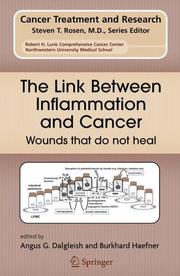
ISBN: 9780387262826 9780387262833 0387262822 1441938818 9786610616596 1280616598 0387262830 Year: 2006 Publisher: Boston, MA Springer Science+Business Media, Inc.
Abstract | Keywords | Export | Availability | Bookmark
 Loading...
Loading...Choose an application
- Reference Manager
- EndNote
- RefWorks (Direct export to RefWorks)
The transcription factor NF-kB has long been known to play a central role in the immune system by regulating the expression of key genes. Moreover, activation of this transcription factor helps a wide variety of cell types survive damage induced by pro-apoptotic stimuli. Owing to its critical role in the regulation of pro-inflammatory genes, NF-kB has long been regarded as a promising target for the discovery of anti-inflammatory drugs. More recently, NF-kB has emerged as a major culprit in a variety of human cancers mainly due to its ability to protect transformed cells from apoptosis. This finding should not have come as a surprise since there exists a link between inflammation and many types of cancer which was already suggested by Galen and later demonstrated by Virchow. This link, of crucial importance for the design of novel strategies for cancer treatment, is the topic of this book. Series Editor Cover Comments: "Inflammation is a known risk factor for a number of cancers. In this text, experts discuss the pathophysiology and molecular alterations that link these two processes. Potential therapeutics and preventive strategies are discussed." Steven T. Rosen, M.D. Series Editor
Cancer --- Carcinogenesis. --- Inflammation. --- Cytokines. --- Inflammation --- Neoplasms --- Neoplasms. --- Immunological aspects. --- Therapy. --- Etiology.
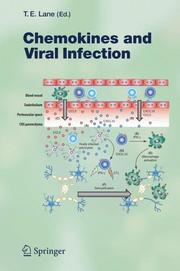
ISBN: 1280866012 9786610866014 3540333975 3540292071 3642067174 Year: 2006 Publisher: Berlin ; [London] : Springer,
Abstract | Keywords | Export | Availability | Bookmark
 Loading...
Loading...Choose an application
- Reference Manager
- EndNote
- RefWorks (Direct export to RefWorks)
This edition of Current Topics in Microbiology and Immunology examines the role of chemokines and chemokine receptors in host defense and disease development following viral infection. Chemokines represent a family of over 40 small proteins that, for the most part, are secreted into the environment and function by binding to G protein-coupled receptors (GPCRs) that are expressed on numerous different cell types. When initially identified close to 30 years ago, these molecules were associated with various human inflammatory diseases and it was recognized that expression may be integral in leukocyte recruitment to inflamed tissue. There are now four sub-families of chemokines identified based on defined structural criteria relating to the positional location of conserved cysteine residues within the amino-terminus of the protein. Chemokines are now recognized as important in numerous biological processes ranging from maintaining the organizational integrity of secondary lymphoid tissue to participating in various aspects of both innate and adaptive immune responses following microbial infection. With this in mind, this book highlights the functional roles of chemokines and their receptors in participating in various aspects of the immune response against well-known viral pathogens.
Chemokines --- Virus diseases --- Pathophysiology. --- Pathogenesis. --- Chemotactic cytokines --- Inflammatory peptides --- Intercrines --- Cytokines --- Inflammation --- Peptides --- Viral diseases --- Viral infections --- Virus infections --- Communicable diseases --- Medical virology --- Pathogenic viruses --- Mediators --- Microbiology. --- Medical Microbiology. --- Microbial biology --- Biology --- Microorganisms --- Medical microbiology.
Dissertation
Year: 2006 Publisher: Gent : Universiteit Gent. Faculteit bio-ingenieurswetenschappen,
Abstract | Keywords | Export | Availability | Bookmark
 Loading...
Loading...Choose an application
- Reference Manager
- EndNote
- RefWorks (Direct export to RefWorks)
animal embryos --- animal embryos --- irradiation. --- irradiation --- Radiation damage --- Radiation damage --- genetic code --- genetic code --- Embryonic development --- Embryonic development --- Morphogenesis --- Morphogenesis --- Induced mutation --- Induced mutation --- Mortality --- Mortality --- apoptosis --- apoptosis --- Cytokines --- Cytokines --- cytogenetics --- cytogenetics --- Laboratory animals --- Laboratory animals
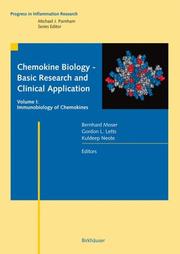
ISBN: 376436825X 9786610608805 1280608803 3764374233 Year: 2006 Publisher: Basel ; Boston : Birkhauser,
Abstract | Keywords | Export | Availability | Bookmark
 Loading...
Loading...Choose an application
- Reference Manager
- EndNote
- RefWorks (Direct export to RefWorks)
The discovery of interleukin-8 close to 20 years ago initiated a new field of research touching on many aspects of immunology and inflammation. Interleukin-8 is just one member of a large class of structurally related chemoattractant proteins, known as chemokines. Chemokines are involved in the traffic control of leukocytes, which bear the corresponding chemokine receptors on their surfaces. Today, it is clear that chemokines affect all aspects of immunology and even many unrelated fields, such as tissue development and tumor cell metastasis. Their fundamental contributions to chronic inflammatory diseases make them a principal target for the development of novel, anti-inflammatory therapeutics. This set of books* gives a state-of-the-art account of recent developments in this field in the form of summaries written by highly regarded experts. Volume I is focused on basic principles and progress in chemokine biology, and Volume II deals with issues related to chemokine-related drug development and potential therapeutic applications. These volumes provide both introductory and novel information for a broad readership, including clinicians and biomedical scientists. *See also K. Neote/G.L. Letts/B. Moser, Chemokine Biology - Basic Research and Clinical Application. Volume II: Pathophysiology of Chemokines. 2006, Birkhäuser, Progress in Inflammation Research, ISBN 3-7643-7195-1.
Chemokines. --- Biology --- Health & Biological Sciences --- Microbiology & Immunology --- Immunology. --- Immunobiology --- Chemotactic cytokines --- Inflammatory peptides --- Intercrines --- Medicine. --- Pharmacology. --- Cell biology. --- Biomedicine. --- Pharmacology/Toxicology. --- Cell Biology. --- Life sciences --- Serology --- Cytokines --- Inflammation --- Peptides --- Mediators --- Toxicology. --- Cytology. --- Cell biology --- Cellular biology --- Cells --- Cytologists --- Chemicals --- Medicine --- Pharmacology --- Poisoning --- Poisons --- Toxicology --- Drug effects --- Medical pharmacology --- Medical sciences --- Chemotherapy --- Drugs --- Pharmacy --- Physiological effect
Book
ISBN: 1280616598 9786610616596 0387262830 Year: 2006 Publisher: New York ; [London] : Springer,
Abstract | Keywords | Export | Availability | Bookmark
 Loading...
Loading...Choose an application
- Reference Manager
- EndNote
- RefWorks (Direct export to RefWorks)
The transcription factor NF-kB has long been known to play a central role in the immune system by regulating the expression of key genes. Moreover, activation of this transcription factor helps a wide variety of cell types survive damage induced by pro-apoptotic stimuli. Owing to its critical role in the regulation of pro-inflammatory genes, NF-kB has long been regarded as a promising target for the discovery of anti-inflammatory drugs. More recently, NF-kB has emerged as a major culprit in a variety of human cancers mainly due to its ability to protect transformed cells from apoptosis. This finding should not have come as a surprise since there exists a link between inflammation and many types of cancer which was already suggested by Galen and later demonstrated by Virchow. This link, of crucial importance for the design of novel strategies for cancer treatment, is the topic of this book. Series Editor Cover Comments: "Inflammation is a known risk factor for a number of cancers. In this text, experts discuss the pathophysiology and molecular alterations that link these two processes. Potential therapeutics and preventive strategies are discussed." Steven T. Rosen, M.D. Series Editor.
Cancer --- Chemokines. --- Inflammation. --- Research. --- Inflammatory process --- Pathology --- Anti-inflammatory agents --- Chemotactic cytokines --- Inflammatory peptides --- Intercrines --- Cytokines --- Inflammation --- Peptides --- Cancer research --- Mediators --- Oncology . --- Oncology. --- Medical laboratories. --- Cancer Research. --- Laboratory Medicine. --- Diagnosis, Laboratory --- Health facilities --- Laboratories --- Tumors --- Cancer research. --- Laboratory medicine. --- Clinical medicine --- Clinical pathology --- Diagnostic laboratory tests --- Laboratory diagnosis --- Laboratory medicine --- Medical laboratory diagnosis --- Diagnosis --- Cancer. --- Medicine --- Biology --- Cancer Biology. --- Biomedical Research. --- Health Workforce --- Cancers --- Carcinoma --- Malignancy (Cancer) --- Malignant tumors --- Biological research --- Biomedical research
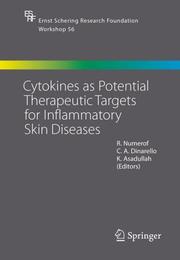
ISBN: 128074412X 9786610744121 3540376739 3540254277 3642421822 Year: 2006 Volume: 56 Publisher: Berlin ; London : Springer,
Abstract | Keywords | Export | Availability | Bookmark
 Loading...
Loading...Choose an application
- Reference Manager
- EndNote
- RefWorks (Direct export to RefWorks)
Cytokines and cytokine receptors remain an area of great interest for the development of targeted therapies for cutaneous inflammatory diseases. Anti-TNF therapeutics have proven to be effective in the treatment of psoriasis, and clinical investigations have now begun for other cytokine-directed therapies, such as those targeting IFN-g, IL-12p40, and IL-18. In addition to therapeutics that target cytokines directly, strategies that target cytokine signaling pathways are in development. This book summarizes the findings of the 56th International Workshop of the Ernst Schering Research Foundation that focused on "Cytokines as Potential Therapeutic Targets for Inflammatory Skin Diseases".
Cytokines --- Skin --- Inflammation --- Chemotherapy --- Mediators --- Cutis --- Integument (Skin) --- Beauty, Personal --- Body covering (Anatomy) --- Dermatology. --- Allergy. --- Immunology. --- Cytology. --- Allergology. --- Cell Biology. --- Cell biology --- Cellular biology --- Biology --- Cells --- Cytologists --- Immunobiology --- Life sciences --- Serology --- Allergic diseases --- Allergies --- Hypersensitivity --- Hypersensitivity, Immediate --- Immediate allergy --- Immediate hypersensitivity --- Immunologic diseases --- Immunoglobulin E --- Medicine --- Diseases --- Cell biology. --- Peau --- Psoriasis --- Chimiokines --- Maladies --- Emploi en therapeutique --- Therapeutique
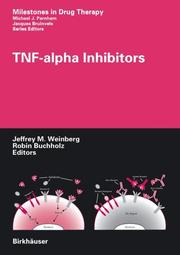
ISBN: 1280615702 9786610615704 3764374381 3764372486 Year: 2006 Publisher: Basel ; Boston : Birkhauser Verlag,
Abstract | Keywords | Export | Availability | Bookmark
 Loading...
Loading...Choose an application
- Reference Manager
- EndNote
- RefWorks (Direct export to RefWorks)
Over the last decade, the advent of biologic agents has greatly revolutionized therapeutic medicine in the management of chronic inflammatory diseases, such as rheumatoid arthritis, Crohn’s disease, and psoriasis. Elucidation of the complex web of cytokine network and the roles of these cytokines in the pathogenesis of inflammatory disorders provided one of the key catalysts for the advancement of targeted biologic therapy in autoimmune and inflammatory diseases. TNF-alpha is known to play a crucial role in the pathogenesis of many chronic inflammatory diseases. Elevated levels of TNF-alpha have been demonstrated in Crohn’s disease, psoriasis, psoriatic arthritis, and rheumatoid arthritis, suggesting a role for TNF-alpha in their pathogenesis. Although TNF-alpha plays a critical role in the activation of innate and acquired immune responses, the persistence of the immune response and inappropriate production of TNF-alpha can produce pathological changes resulting from chronic inflammation and tissue damage. This volume provides a comprehensive overview of the development, pharmacology, efficacy, and safety of the currently available TNF-alpha inhibitors – etanercept, infliximab, and adalimumab. The most recent preclinical and clinical data is presented on this topic, which should be of interest to the preclinical researcher, the clinician, and the patient who wants to learn more about these therapies.
Tumor necrosis factor --- Anti-inflammatory agents. --- Inhibitors. --- Anti-inflammatories --- Antiinflammatory agents --- Antiphlogistics --- Antipyretics --- Inflammation --- Cachectin --- Lymphotoxin --- TNF (Immunology) --- Cytokines --- Glycoproteins --- Growth factors --- Macrophages --- Immunology. --- Rheumatology. --- Dermatology. --- Toxicology. --- Gastroenterology. --- Pharmacology/Toxicology. --- Internal medicine --- Digestive organs --- Chemicals --- Medicine --- Pharmacology --- Poisoning --- Poisons --- Skin --- Connective tissues --- Joints --- Immunobiology --- Life sciences --- Serology --- Diseases --- Toxicology --- Pharmacology. --- Gastroenterology . --- Drug effects --- Medical pharmacology --- Medical sciences --- Chemotherapy --- Drugs --- Pharmacy --- Physiological effect
| Listing 1 - 10 of 11 | << page >> |
Sort by
|

 Search
Search Feedback
Feedback About UniCat
About UniCat  Help
Help News
News